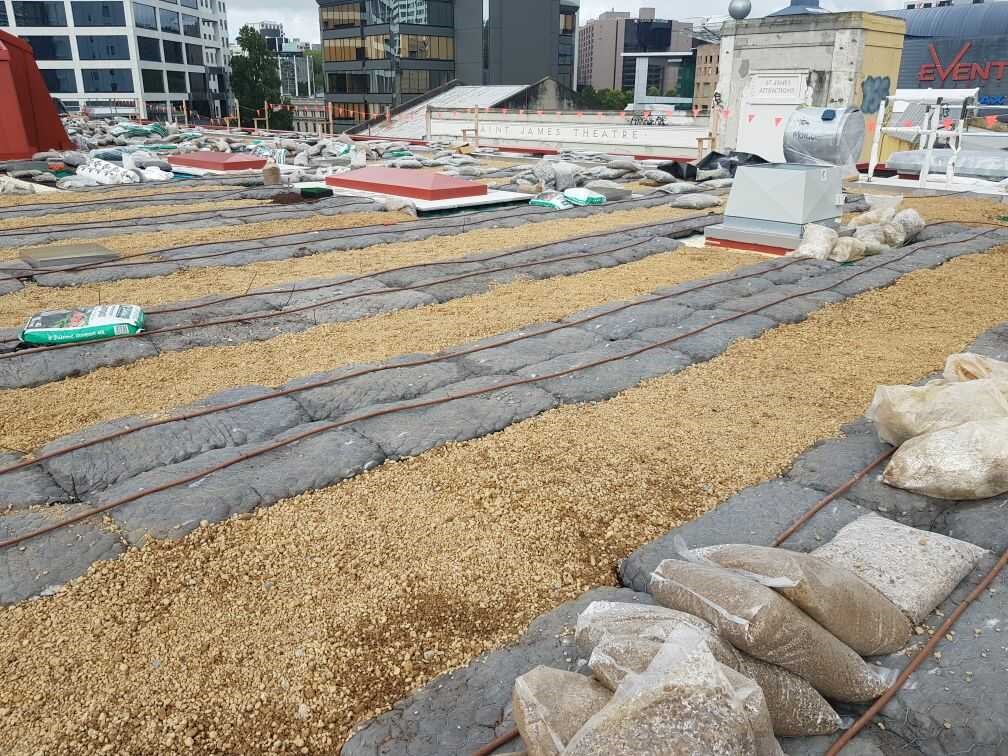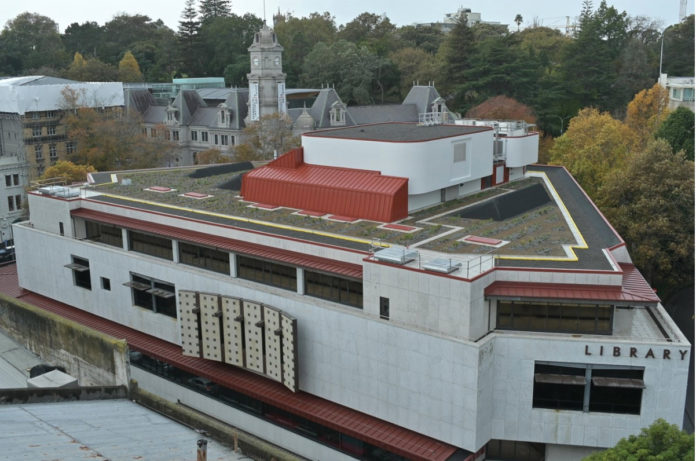Auckland Council has installed a living ‘green roof’ featuring more than 2,000 plants on top of the central Auckland Library.
Auckland Mayor, Phil Goff said he hopes the green roof will prompt other central Auckland property owners to consider the benefits of green infrastructure.
“As part of essential repair work to the library roof, Auckland Council took the opportunity to install plants as an alternative top layer to the usual stone ballast,” he says.
“The living roof will have a range of benefits, including reducing stormwater runoff, improving air quality, protecting the roof membrane from solar damage, and increasing biodiversity and habitat opportunities for insects and birds.
“It will be an example to other property owners in the central city to investigate installing green infrastructure, which as well as the environmental benefits, will help make our city centre a more pleasant place to work, shop and visit.”
Local iwi Ngāti Whātua Ōrākei developed the roof design inspired by whāriki, a plaiting style of weaving representing the laying of foundations for all that it bears.
“You can see a pattern known as ‘poutama’ which represents education, progress, and ascension. It pays homage to the library as a place where people seek greater knowledge and understanding,” says Ngāti Whātua Ōrākei artist Hinengarangi Makoare.

Ngāti Whātua Ōrākei’s nursery propagated suitable native plant species for the exposed roof environment.
“Living roofs are becoming more desirable internationally due to the benefits they offer cities,” says General Manager Healthy Waters, Craig Mcilroy.
“Not only do they contribute to carbon dioxide reduction, but they also bring additional environmental, economic, and social wellbeing benefits.
“These might be providing better stormwater management; reduction in a building’s energy demand and increasing biodiversity opportunities in the city environs.
“A range of benefits will be monitored, reported on, and shared publicly, and we hope this will help others learn from this project and be inspired by living infrastructure,” he said.
The remedial roof work for the library cost around $10 million, with an additional $730,000 for the installation of the living roof.
A total of 2,050 low-maintenance, hardy native plants have been planted in ‘eco-pillows’ designed to incorporate a mix of soil and nutrients and prevent soil particles and sediment from filtering into drainage and stormwater systems. An additional 300 to 400 plants will be planted over the coming months to improve overall coverage.



